This saga begins in Ireland in the county of Dhún na nGall (Fort of the Foreigners.)

For the past couple of months I’ve been digging deeper into my ancestry. To my surprise, I came across something stretching over three generations that could easily serve as the basis for a television mini-series. To that end, when possible I tried to distill various sources into a single narrative. If you wish to dig deeper, source material and or links are in the footnotes.
The story begins around 1730 in Donnegal, the most northerly county in Ireland
(shown in green bordering Northern Ireland shown in red)
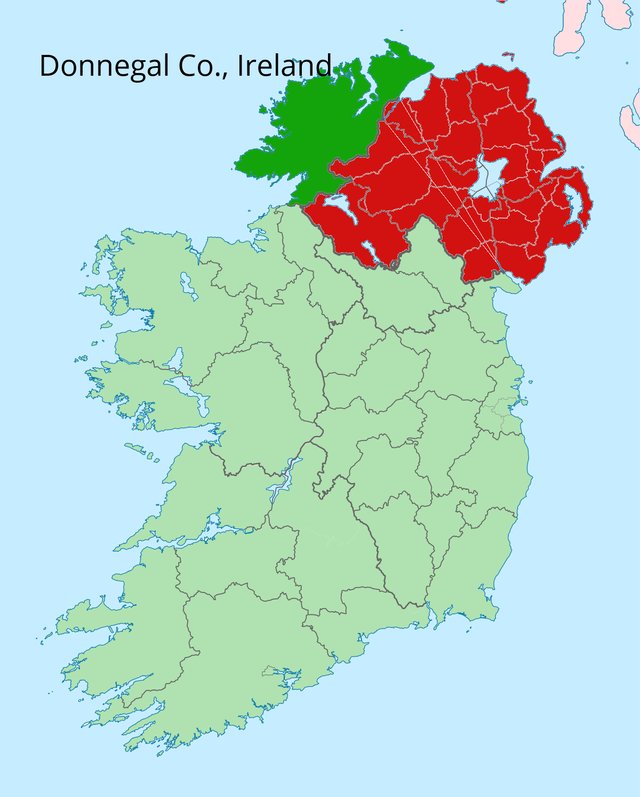
Donnegal, aka Dhún na nGall (Fort of the Foreigners.)
My great (X 6) grandparents James Simeral and his wife Margret, née Ware, were Presbyterians whose families had come from Scotland to Ireland as colonists in the previous century. In 1732 Margret gave birth to twins, and as was sometimes the custom, one of the twins, Rhoda, was given to a childless aunt to raise – for reasons you’ll soon learn, had that not occurred, I would never have been born.
James, Margret and their children left Ireland for the colonies in America, the date isn’t known but it was before 1742 and perhaps as early as 1735. Rhoda remained in Ireland with her aunt. It’s quite remarkable that we know what happened next, that’s due in large part to the fact that Rhoda lived nearly a hundred years (1732-1831.)
Late in life Rhoda lived with one of her granddaughters. That gave her great grandson Harvey H. Hanna (born in 1821) a chance to listen to her life stories. In 1901 when he was 80 years old, Harvey wrote his memories of his great grandmother.1 (Link to his complete account in the footnote below.)
Into the Unknown
According to Harvey, Rhoda’s family crossed the Atlantic in a ship with 500 passengers and crew. Shortly before reaching the coast, the captain put the passengers off on an island with some of the crew and rations for a few days. He promised to return after taking care of formalities. He left with their goods and never returned. By the time they were discovered, 450 had perished. Except for Rhoda’s mother Margret, the entire Simeral family was lost. The survivors where then brought to Boston.1 Some accounts state that the island was in the Caribbean West Indies.
Margret was no doubt devastated physically, financially, and emotionally. In addition to her ordeal, she was also expecting a child, a boy whom she would name James Franklin Simeral after her late husband.2 [Despite H.H. Hanna’s account, based on James’s year of birth (according to some sources), it seems the Simerals may have left Ireland as early as 1735.] If that is the case, we don’t know how she survived for the next eight years – her estimated age in 1735 would have been 23.
In any case, around 1743, at about 31 years of age, Margret married another Scots-Irish settler, a widower named George F. Davidson. He had at least three children from his first marriage.2 At that time the family was near Lancaster, Pennsylvania which was the gateway to the Great Wagon Road.
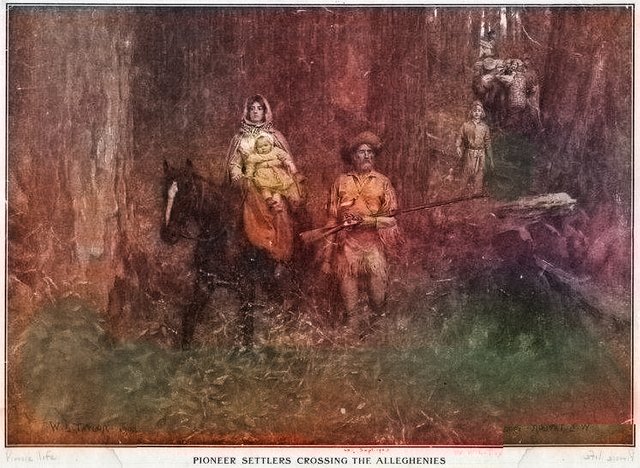
“The Great Wagon Road passed through the towns of Lancaster and York in southeastern Pennsylvania. Turning southwest, the road crossed the Potomac River and entered the Shenandoah Valley near present-day Martinsburg, West Virginia. It continued south in the valley via the Great Warriors' Trail (also called the Indian Road, as on this map), which was established by centuries of Indian travel over ancient trails created by migrating buffalo herds. The Shenandoah portion of the road is also known as the Valley Pike. The Treaty of Lancaster in 1744 had established colonists' rights to settle along the Indian Road. Although traffic on the road increased dramatically after 1744, it was reduced to a trickle during the French and Indian War (Seven Years' War) from 1756 to 1763. But after the war ended, it was said to be the most heavily traveled main road in America. (Wikipedia)
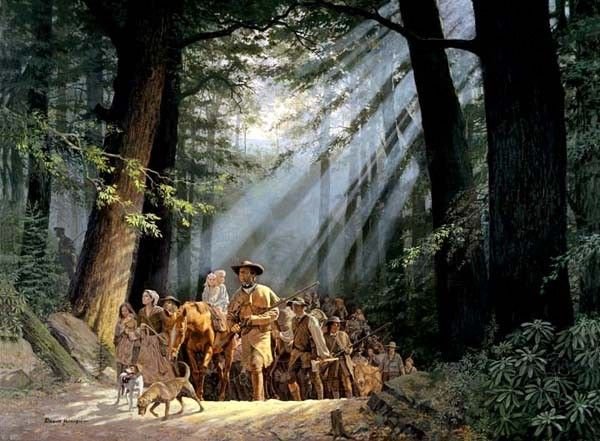
Davidsons in Carolina
In 1746 Margret gave birth to William Lee Davidson in Lancaster Co. Pennsylvania, and by 1748 the family was in North Carolina. By 1749 George Davidson had received two land grants, each for 300 acres. Over the course of time he received seven land grants. By 1753 George owned a tavern on his plantation. On the tavern application several prominent men were listed as guarantors.3 Sadly he died in January of 1760.
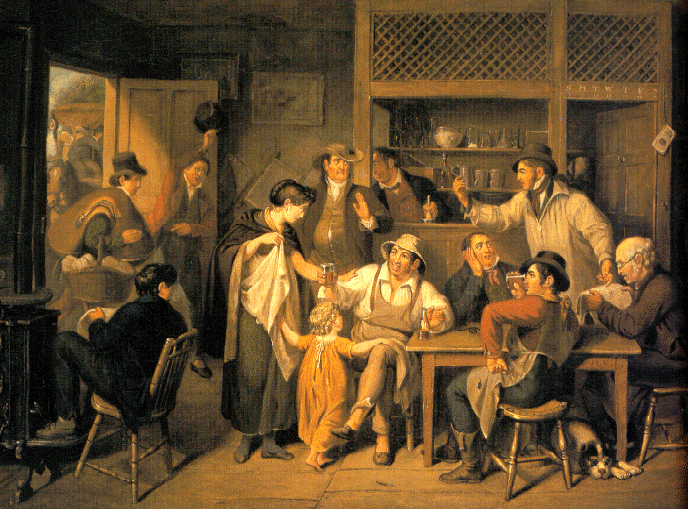
Colonial Tavern
The Irish Twin – a Missing Piece of the Puzzle
We don’t know how and when Rhoda left her aunt and Ireland for America. Did she travel alone, or perhaps with family, friends, or neighbors? When did she reunite with her mother and meet her brother James Simeral and her half brother William Lee Davidson? What we do know is that she married Humphrey Cunningham on June 29, 1752 in Hanover Township, Lancaster Co.4 In the account footnoted below it is assumed that Rhoda was living with the Davidson family, however, we know (per above) that at this time her mother’s family was already in North Carolina.
In 1752 Rhoda’s husband purchased land in Lancaster Co. with his inheritance from his father’s estate. It appears Harvey Hanna’s account is correct, they lived in Pennsylvania for several years. Humphrey Cunningham first appears in North Carolina records on Sept. 22, 1759, when he bought 630 acres in Rowan Co. NC from Lord Granville.5
Could this possibly be the first time Rhoda was reunited with her mother and family – ten years after the Davidsons left Pennsylvania? Interestingly, she named her first son “George” apparently after her stepfather George Davidson. She named another son James after her brother James Simeral. Her brother James named a daughter after Rhoda.
Moving On
In any case, within a few months of Rhoda’s arrival in North Carolina, George Davidson would be dead, and about five years later her mother would pass. After her mother’s death Rhoda and Humphrey resettled in the Northern part of the York District which in 1766 was still in North Carolina.6 After the death of her mother, Rhoda would live another 65 years! They continually resettled moving westward. The application for a Military pension from the Revolutionary War service from Rhoda’s son, George Cunningham, provides a handy overview of their movements:
George Cunningham a resident of said county and State aged seventy nine who being first duly sworn according to law doth on his oath make the following declaration...That he entered the service of the United States under the following officers and served as herein stated. That he was born on the 7th day of April 1753 as appears by a record kept by his father which is now in the possession of George W. Cunningham of this County; that he was born in Rowan County, North Carolina; that he was living in York County, South Carolina when he entered the service and lived there until the close of the war when he moved to Buncombe County, North Carolina where he resided until the year 1815 when he removed into the said County of Bedford where he resided until 1824 when he removed back to Buncombe where he resided until December last when he returned to Bedford County where has since resided and still resides. That sometime in the latter part of the winter of 1779, as he believes, he entered the service as a volunteer In York County, South Carolina under Captain Robert Thompson, John Cunningham (brother of affiant) was Lieutenant…7
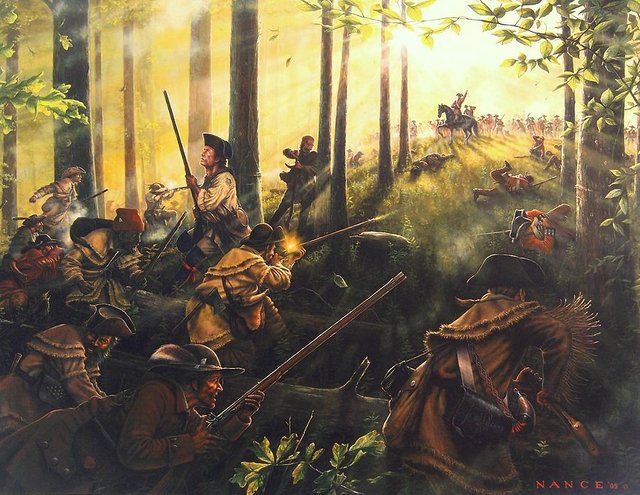
George Cunningham, my great (X 4) grandfather, fought at the Battle of Kings Mountain
A Sketch of Rhoda Cunningham from her local newspaper
The following sketch was published in the Bedford County newspaper by Col. Andrew Erwin in the early part of the nineteenth century [about 1825]:
"Rhoda Cunningham, of Bedford County, Tennessee, who is in her 93rd year, is the ancestor at this time of 306 living descendants, children and grandchildren born to the fourth generation. What is most consolatory to the declining years of this most honorable matron is that out of this long line of descendants none have yet done ought to detract from the character of an honest family, but all are esteemed as worthy citizens engaged in the most laudable pursuits of life, earning their bread by the sweat of their brows."8
What a life up to this point: leaving Ireland and crossing the Atlantic in a wooden ship, walking from Pennsylvania to North Carolina next to a wagon, life on the frontier, and two sons and two brothers who fought in the Revolutionary War.
She was married for 54 years to Humphrey Cunningham who died in 1806 – thus she lived another 25 years without him. They had two sons and four daughters. Her granddaughter Magdalane Medley Cunningham was my great great great grandmother who married William Holmes Bryson.
Her story is a vivid example of the power of isolated events. If Rhoda Simeral Cunningham had accompanied her parent on the trip to America, it’s likely she would not have survived – and I, along with a staggering number of people, would never have existed.
Revolution
Rhoda’s younger half-brother William Lee Davidson was born in 1746, the first child of George F. Davidson and Margret Simeral, née Ware (Rhoda’s mother.) Thus, he would be my great (X 5) granduncle, or perhaps more accurately half-granduncle. In my experience in genealogy, it’s rare that one encounters an over abundance of information about a relative, but that is the case with Gen. William Lee Davidson.
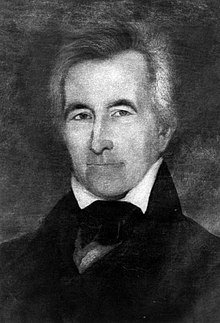
General William Lee Davidson from his Wikipedia page.
He is a man who had a Town, a college, and counties in Tennessee and North Carolina named after him.
Davidson County North Carolina
The current North Carolina county was formed in 1822 from Rowan County. It was named after Brigadier General William Lee Davidson, an American Revolutionary War general killed at the Battle of Cowan's Ford on the Catawba River in 1781.
The original North Carolina county of this name was created in 1786 what was then the far western portion of North Carolina, with its county seat at Nashville and a territory covering most of what is now Middle Tennessee. When Tennessee was established as a separate state in 1796, this county became Davidson County, Tennessee. Source Wikipedia
Davidson County Tennessee
Davidson County is the oldest county in the 41-county region of Middle Tennessee. It dates to 1783, when the North Carolina legislature created the county and named it in honor of William Lee Davidson, a North Carolina general who was killed opposing General Cornwallis and the British Army's crossing of the Catawba River on February 1, 1781. The county seat, Nashville, is the oldest permanent European settlement in Middle Tennessee, founded by James Robertson and John Donelson during the winter of 1779–80. Source Wikipedia
Town of Davidson, North Carolina
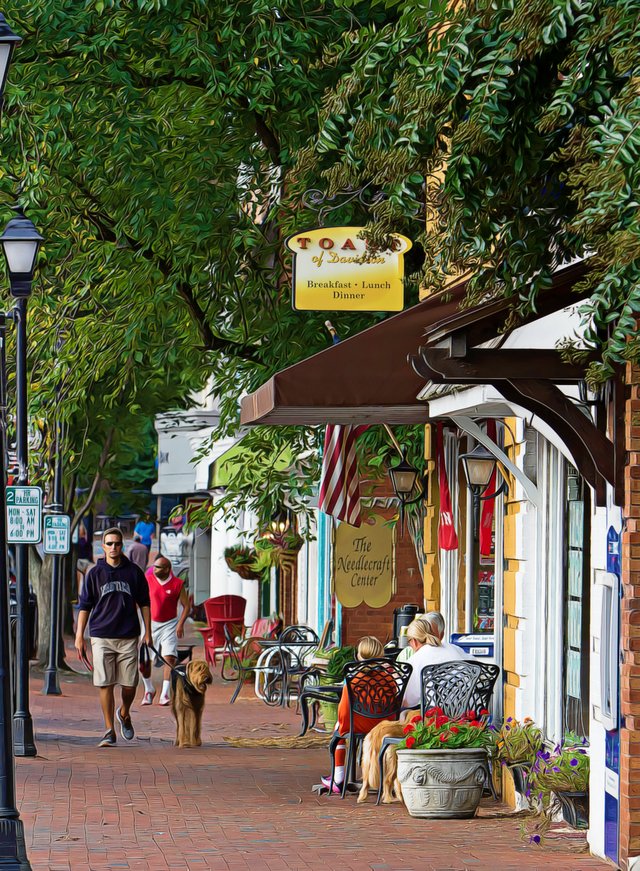
John Davidson, described as "a prosperous Ulster merchant", was a member of the Davidson family who migrated south from Pennsylvania. Davidson's Creek was the westernmost settlement in North Carolina at the time, and according to Robert Ramsey's Carolina Cradle, it "became the nucleus of the Centre Presbyterian Congregation.” John Davidson's son William went on to serve in the American Revolution, eventually becoming a major. Maj. William Davidson was a cousin of Col. William Davidson, the first state senator from Buncombe County, North Carolina, who in turn was a cousin of Gen. William Lee Davidson, for whom Davidson College was named. Gen. Davidson's son William Lee Davidson II sold 469 acres (1.90 km2) to the Concord Presbytery to start Davidson College. The history of the town of Davidson is inextricably linked to Davidson College, which predated the surrounding community and influenced its development. Source Wikipedia
Davidson College
Photo Google Maps
An institution of higher learning of The Presbyterian Church USA, Davidson College was founded in 1837 by The Concord Presbytery after purchasing 469 acres (1.90 km2) of land from William Lee Davidson II. He was the son of Revolutionary War commander Brigadier General William Lee Davidson, for whom the college is named. Source Wikipedia
As noted above, William Lee’s father died in 1760. In his will he requested that his "trusty and well-beloved Friends" Alexander Osborn and John Brevard, Esquires, assist his wife and assume guardianship of his sons’ education. These two men were the most prominent residents in the area, and they saw to it that William Lee received a proper classical education.
He attended Sugaw Creek Academy near Charlotte when the Rev. Alexander Craighead was pastor and likely educator. Like many of the Scots-Irish in the area, Rev. Craighead was from Donegal, Ireland, and had spent time in Lancaster, Pennsylvania before landing in North Carolina. He was no ordinary churchman, he was a political radical, a pamphleteer who had been published by Ben Franklin. He mixed theology and politics and took part in political disturbances. Here’s a link to his interesting biography https://www.ncpedia.org/biography/craighead-alexander
Seven years after his father’s passing, 1767, William Lee married Mary Brevard, the daughter of his guardian John Brevard. In the autumn of 1777 he, now a Major, marched his regiment to join General George Washington at the Battle of Brandywine, and fought in the Battle of Germantown, after which he was promoted to Lt. Col. for gallantry in action. He endured the harsh winter at Valley Forge and during the ordeal cemented close friendships with “Light-Horse Harry” Lee and Daniel Morgan. Once back in the Carolinas he was shot in the stomach and seriously wounded at the Battle of Colson’s Mill. After two months recuperation he was back in the fight. After General Rutherford capture, William Lee Davidson was promoted to General.
When Cornwallis, with vastly superior forces, attempted to break the spirit of the locals by occupying Charlotte in September of 1780, William Lee and other militia commanders made sure they were incessantly vexed and relentlessly attacked by sniper fire. This damaged their morale, dried up their supply and communications lines, and earned Charlotte the knickname “Horents Nest” – a badge of honor.
In 1781 at the age of 34, just a month after Mary gave birth to their 7th child, William Lee, riding at the head of his troops, was killed by a Tory bullet at the Battle of Cowan’s Ford on the Catawba River.
His stripped body was recovered by his loyal troops late that evening, and secretly buried that night in a torchlight ceremony in the Hopewell Churchyard with his grieving wife in attendance. Her suffering was not over, after the defeat and death of her husband, Banastre Tarleton's Tory troops ravaged the locals, making a point of burning her father’s (John Brevard) home to the ground. Later, Mary Brevard would be awarded land in Davidson Co. (now in Tennessee) where she resettled.
Although it was a defeat, it served the greater cause, Cornwallis’ delayed crossing of the Catawba River allowed Gen. Greene to effect his retreat which in turn led to the decisive Battle of Guilford Courthouse and eventually the victory at Yorktown.9
If you are a interested in Gen. William Lee Davidson’s biography, I suggest you read an excellent article available on the NCpedia website https://www.ncpedia.org/biography/davidson-william-lee . For descendants I’ll also leave a few links below with extensive background material, even a report from 1857 by the US Senate on the military service of General William Lee Davidson.
The Patriot
About twenty years ago there was a Hollywood film entitled “The Patriot” staring Mel Gibson and Heath Ledger. Like many films it contains many historical inaccuracies, the lead character is an overly romanticized superhero, the antagonists (in this case the British) are excessively vilified, and it has a happy end. Nonetheless, if you are related to Gen. Davidson there are some noticeable parallels that make it worth watching.
Like Mel Gibson’s character, William Lee (son of a tavern owner) was known as the most popular man in the region, he was a beloved commander, and a very effective militia recruiter. Like Mel Gibson’s character, William Lee was bold and courageous, but in his case he was killed in battle. The film especially highlights the important role of the Carolina militia played in the eventual defeat of the British army, and the tactics of employing the militia as a Flying Army against Lord Cornwallis and Banastre Tarleton.
Reflection
Compare
And Contrast
Photos
Opening photo Girl on a Mountain is free use from Pixabay.com with effects by @roused
Map of Ireland Wikipedia
Settlers crossing Appalachians from NY Public Lib. collection
Settler walking from Pinterest
Colonial Tavern appears on multiple websites, copyright unknown
Painting, Battle of Kings Mountain by Dan Nance, fineartamerica.com
Town of Davidson Wikipedia with effects by @roused
Davidson College from Google Maps
Footnotes
1 Harvey H Hanna, great grandson of Rhoda Simeral family history.
https://freepages.rootsweb.com/~mcewen444/genealogy/740.HTM
2 Davidson genealogy
http://www.davidsongenealogy.com/family1/getperson.php?personID=I396& tree=Family1
which contains this note by George Stephen Hand:
In the late 1750s the family of George Davison / Davidson consisted of wife Margret (Margaret), sons George, William, and Samuel, a grandson George, a stepson James Summerville (Simmerel) and a daughter who married Robert Gibson, and there was at least one other son, a minor at the time George made his will in what was then Rowan, and is now Iredell County. The will was proved in 1760. Margaret was still living in 1765, having made her mark on a deed that year. Nothing further is known of her."
3 Davidson genealogy
http://www.davidsongenealogy.com/family1/getperson.php?personID=I396& tree=Family1
which contains this note by George Stephen Hand:
"In Nov of 1748 second-generation George Davison / Davidson and his family were situated in what is now Iredell County, NC, probably as squatters, since no land deeds can be found for that date. Tradition locates his log cabin on the east side of Davidson's (then Davison's) creek, to the right of the Centre Church road, which spurs west from the modern Statesville highway. In 1749 George petitioned for and was granted two tracts of 300 acres each. He received seven grants in all, including one from Lord Granville in Anson and Rowan counties.
You can also read George’s transcribed will in the notes on the above link – interestingly, he treats his step-son, James Simeral, very fairly.
"On his plantation, as early as 1753, George had an "ordinary" or taven. On his application for a tavern license, he named as securities John Brevard, Edward Hughes, Walter Carruth, John Dunn, Alexander Osborn and William Morrison, all outstanding citizens.
4 Davidson genealogy
Humphrey is married to Rhoda Simeral/Summerville on June 29, 1752 in Hanover TWP, Lancaster Co. Pennsylvania. She was probably living with her mother, Margaret Simeral who had married George Davidson in Chester Co. Penn. (Early Lutheran Baptisms and Marriages in Southeast Penn. by John C. Stoever, Hanover TWP, Lancaster Co., page 93, Rev. Stoever wrote "Zemmeral", surely a germanicized version of Simeral)
- Carolina Cradle by Robt. W. Ramsey
Humphrey purchased 630 acres of land from Lord Granville on Sept. 22, 1759 in Rowan Co. North Carolina on both sides of Witherows Creek. (Deed Book 4, pages 315-17 and sketch of property) (Carolina Cradle by Robt. W. Ramsey).
6 see Carolina Cradle, pgs. 45,46,47, 100 and Heritage of Old Buncombe Co. Item 202
7 read Rev. George Cunningham’s complete Revolutionary War pension application
http://www.revwarapps.org/w2071.pdf
8 https://www.findagrave.com/memorial/30425337/rhoda-cunningham
9 https://www.ncpedia.org/guilford-courthouse-battle
Learn More
https://en.wikipedia.org/wiki/William_Lee_Davidson
Gen. William Lee Davidson Wikipedia Page
http://libraries.davidson.edu/archives/encyclopedia/general-william-lee-davidson
Davidson College Timeline for Gen. William Lee Davidson
http://www.hopewellpresbyterian.com/indexNewLook2011d.php?n=2011NewLook/OurAncestors/gendavidsonwallet&t=0&ph=History
General Davidson's Wallet
https://www.genealogy.com/ftm/h/a/r/Margaret-Leach-Harrill/WEBSITE-0001/UHP-0005.html
Information about Humphrey Cunningham
https://www.ncpedia.org/biography/davidson-william-lee
Excellent biography
http://www.revwarapps.org/w2071.pdf
Rev. George Cunningham military service (Rhoda’s son)
https://www.findagrave.com/memorial/44230236/james-franklin-simril
http://www.davidsongenealogy.com/family1/getperson.php?personID=I2773&tree=Family1
James Franklin Simeral (Rhoda’s brother) There is a Revolutionary Warrent # 3792 - Sgt. James Simeral, Sargent: November 15, 1793. This 1000 acre land grant to James Simril from the State of North Carolina in 1793 was a bonus for his services to the American Revolutionary Cause. That land supposedly was in White County, Tennessee where James died abt 1820.
https://archive.org/details/generalwilliamle31grah/page/4
General William Lee Davidson : an address Publication date 1906
by Graham, William Alexander, 1839-1923; Guilford Battleground Co
https://docsouth.unc.edu/csr/index.html/document/csr22-0021
Report by the United States Senate concerning William Lee Davidson's military service in the Revolutionary War
United States. Congress
January 21, 1857
Volume 22, Pages 118-120
http://davidsonjournal.davidson.edu/2012/07/we-are-family/
Article in the Davidson College Journal
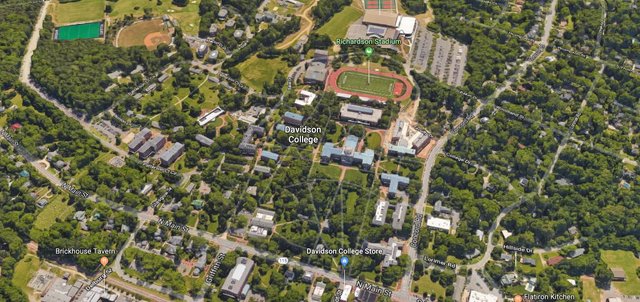
I also still have to really dig deep..
Seemed like my ancestors went to africa and nothing was ever heard of em again..
Posted using Partiko Android
Downvoting a post can decrease pending rewards and make it less visible. Common reasons:
Submit
Congratulations @roused! You received a personal award!
You can view your badges on your Steem Board and compare to others on the Steem Ranking
Vote for @Steemitboard as a witness to get one more award and increased upvotes!
Downvoting a post can decrease pending rewards and make it less visible. Common reasons:
Submit
Great read. It's good that you got that far. Now you have stories to pass on to your family. Write a book.
Downvoting a post can decrease pending rewards and make it less visible. Common reasons:
Submit